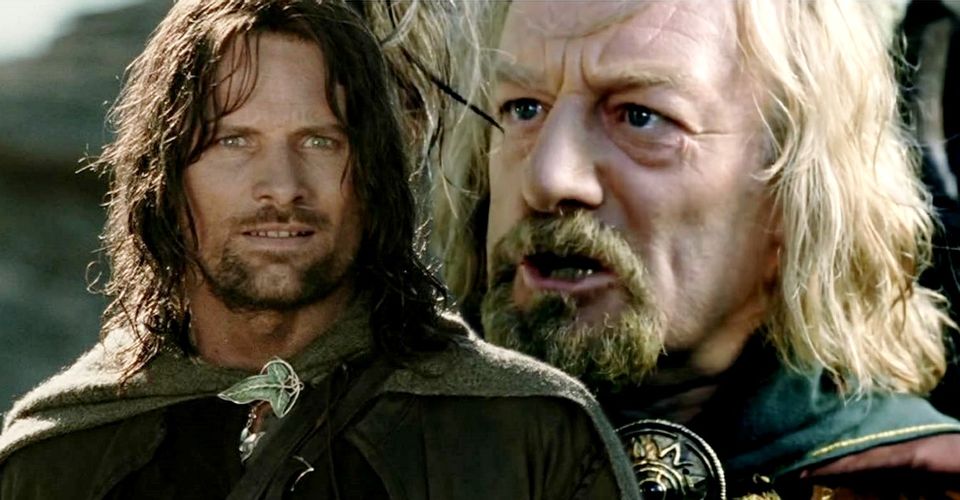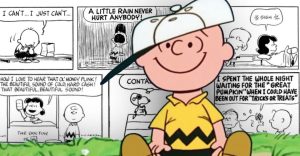Lord of the Rings: Where WAS Gondor When The Westfold Fell?

You’ve seen the “where was Gondor when the Westfold fell?” memes online, but what does Théoden’s iconic The Lord of the Rings line actually refer to, and why didn’t Gondor lend a hand? The legacy of Peter Jackson’s Lord of the Rings movies speaks for itself. The groundbreaking special effects paved the way for modern CGI, and the trilogy’s success made fantasy popular again, years before Game of Thrones and The Witcher. For some, however, the true legacy of the Lord of the Rings trilogy is the abundance of memes. From second breakfast to “one does not simply walk into Mordor,” few fictional realms have proved as meme-worthy as Middle-earth.
One of the best and most prevalent Lord of the Rings memes is Rohan’s King Théoden in The Two Towers angrily questioning Gondor’s willingness to help in battle. As Théoden and Aragorn plot their ambitious defense of Helm’s Deep, Aragorn advises the King to call for aid, assuring him that Gondor will come. In his rage and bitterness, Théoden replies through gritted teeth, “where was Gondor when the Westfold fell?” Thanks to the power of the internet, the line became far more famous than intended, leaving many wondering exactly what Théoden meant. What was the Westfold? How and when did it fall? And why didn’t Gondor bother showing up?
The Westfold Théoden speaks of is the large section of western Rohan within which Helm’s Deep sits (although some consider it adjacent). The fall of the Westfold takes place during Lord of the Rings‘ timeline, shortly before Gandalf, Aragorn and the others arrive in Rohan. These events are spoken of, but largely happen off-screen. Roughly coinciding with Frodo and his still-intact Fellowship travelling the River Anduin by boat (near the end of Fellowship of the Ring), Saruman attacked the Fords of Isen, which sit between his Isengard stronghold and Helm’s Deep. The wizard’s forces were bravely met by Théoden’s son, Théodred, who was a respected commander, but the goal of Saruman’s sortie was solely to kill the prince, and thus weaken Rohan ahead of future assaults. A second attack at the Fords was launched several weeks later (the Fellowship had split by this point), and Saruman claimed a decisive victory, thus the Westfold fell.

King Théoden casts aspersions upon Gondor for not helping defend the Westfold, but Denethor’s people had several very valid reasons for being no-shows. To begin with, Rohan didn’t ask for aid. Théoden was still in his malaise, the strength of Saruman’s forces remained unknown, and Wormtongue’s influence held sway. Théoden’s meme implies that Gondor refused an SOS call when, truthfully, Rohan didn’t pick up the phone. Even if they had, Gondor was in no position to answer. While Rohan was defending the Westfold, Faramir was fighting Nazgul and other dark minions of Sauron at Osgiliath – the ruined city seen in The Two Towers and The Return of the King. Gondor’s soldiers were spread thinly between this and other key strategic points, leaving no soldiers to spare. To complicate matters further, the distance from Minas Tirith to the Westfold is over 300 miles, and mountains lay between them. Even if Rohan had called for aid, and Gondor did have the numbers to respond, they would’ve been late to the party.
But if Gondor wasn’t to blame, why is Théoden so vexed about their absence? This simmering tension between the thrones of Gondor and Rohan is largely a creation of Peter Jackson’s movie trilogy, perhaps designed to ramp up dramatic tension. Held against Tolkien’s Lord of the Rings, Théoden’s attitude doesn’t quite correlate, but it could be argued that the loss of his son at the Fords of Isen made the Westfold’s fall a touchy subject.
About The Author


















